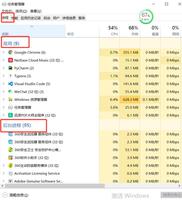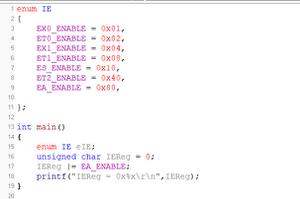〖Python〗-- Tornado基础

【Tornado基础】
概述
Tornado 是 FriendFeed 使用的可扩展的非阻塞式 web 服务器及其相关工具的开源版本。这个 Web 框架看起来有些像web.py 或者 Google 的 webapp,不过为了能有效利用非阻塞式服务器环境,这个 Web 框架还包含了一些相关的有用工具 和优化。
Tornado 和现在的主流 Web 服务器框架(包括大多数 Python 的框架)有着明显的区别:它是非阻塞式服务器,而且速度相当快。得利于其 非阻塞的方式和对 epoll 的运用,Tornado 每秒可以处理数以千计的连接,这意味着对于实时 Web 服务来说,Tornado 是一个理想的 Web 框架。我们开发这个 Web 服务器的主要目的就是为了处理 FriendFeed 的实时功能 ——在 FriendFeed 的应用里每一个活动用户都会保持着一个服务器连接。(关于如何扩容 服务器,以处理数以千计的客户端的连接的问题,请参阅 C10K problem。)
下载安装:
1 2 3 4 |
|
框架使用
一、快速上手
1 2 3 4 5 6 7 8 9 10 11 12 13 14 15 16 17 18 19 |
|
执行过程:
- 第一步:执行脚本,监听 8888 端口
- 第二步:浏览器客户端访问 /index --> http://127.0.0.1:8888/index
- 第三步:服务器接受请求,并交由对应的类处理该请求
- 第四步:类接受到请求之后,根据请求方式(post / get / delete ...)的不同调用并执行相应的方法
- 第五步:方法返回值的字符串内容发送浏览器
二、路由系统
路由系统其实就是 url 和 类 的对应关系,这里不同于其他框架,其他很多框架均是 url 对应 函数,Tornado中每个url对应的是一个类。
PS:路由元组中,第一个参数是url,第二个是要执行的类,第三个是字典,第四个参数是name:" "。
#!/usr/bin/env python# -*- coding:utf-8 -*-
import tornado.ioloop
import tornado.web
class MainHandler(tornado.web.RequestHandler):
def get(self):
self.write("Hello, world")
class StoryHandler(tornado.web.RequestHandler):
def get(self, story_id):
self.write("You requested the story " + story_id)
class BuyHandler(tornado.web.RequestHandler):
def get(self):
self.write("buy.wupeiqi.com/index")
application = tornado.web.Application([
(r"/index", MainHandler),
(r"/story/([0-9]+)", StoryHandler),
])
application.add_handlers('buy.wupeiqi.com$', [
(r'/index',BuyHandler),
])
if __name__ == "__main__":
application.listen(80)
tornado.ioloop.IOLoop.instance().start()
路由系统举例
Tornado中原生支持二级域名的路由,如:
三、模板引擎
Tornao中的模板语言和django中类似,模板引擎将模板文件载入内存,然后将数据嵌入其中,最终获取到一个完整的字符串,再将字符串返回给请求者。
Tornado 的模板支持“控制语句”和“表达语句”,控制语句是使用 {% 和 %} 包起来的 例如 {% if len(items) > 2 %}。表达语句是使用 {{ 和 }} 包起来的,例如 {{ items[0] }}。
控制语句和对应的 Python 语句的格式基本完全相同。我们支持 if、for、while 和 try,这些语句逻辑结束的位置需要用 {% end %} 做标记。还通过 extends 和 block 语句实现了模板继承。这些在 template 模块 的代码文档中有着详细的描述。
注:在使用模板前需要在setting中设置模板路径:"template_path" : "tpl"
1、基本使用
#!/usr/bin/env python# -*- coding:utf-8 -*-
import tornado.ioloop
import tornado.web
class MainHandler(tornado.web.RequestHandler):
def get(self):
self.render("index.html", list_info = [11,22,33])
application = tornado.web.Application([
(r"/index", MainHandler),
])
if __name__ == "__main__":
application.listen(8888)
tornado.ioloop.IOLoop.instance().start()
app.py
<!DOCTYPE html><html>
<head>
<meta http-equiv="Content-Type" content="text/html; charset=UTF-8"/>
<title>老男孩</title>
<link href="{{static_url("css/common.css")}}" rel="stylesheet" />
</head>
<body>
<div>
<ul>
{% for item in list_info %}
<li>{{item}}</li>
{% end %}
</ul>
</div>
<script src="{{static_url("js/jquery-1.8.2.min.js")}}"></script>
</body>
</html>
index.html
在模板中默认提供了一些函数、字段、类以供模板使用:escape: tornado.escape.xhtml_escape 的別名
xhtml_escape: tornado.escape.xhtml_escape 的別名
url_escape: tornado.escape.url_escape 的別名
json_encode: tornado.escape.json_encode 的別名
squeeze: tornado.escape.squeeze 的別名
linkify: tornado.escape.linkify 的別名
datetime: Python 的 datetime 模组
handler: 当前的 RequestHandler 对象
request: handler.request 的別名
current_user: handler.current_user 的別名
locale: handler.locale 的別名
_: handler.locale.translate 的別名
static_url: for handler.static_url 的別名
xsrf_form_html: handler.xsrf_form_html 的別名
其他方法
2、母版
<!DOCTYPE html><html>
<head>
<meta http-equiv="Content-Type" content="text/html; charset=UTF-8"/>
<title>老男孩</title>
<link href="{{static_url("css/common.css")}}" rel="stylesheet" />
{% block CSS %}{% end %}
</head>
<body>
<div class="pg-header">
</div>
{% block RenderBody %}{% end %}
<script src="{{static_url("js/jquery-1.8.2.min.js")}}"></script>
{% block JavaScript %}{% end %}
</body>
</html>
layout.html
{% extends 'layout.html'%}{% block CSS %}
<link href="{{static_url("css/index.css")}}" rel="stylesheet" />
{% end %}
{% block RenderBody %}
<h1>Index</h1>
<ul>
{% for item in li %}
<li>{{item}}</li>
{% end %}
</ul>
{% end %}
{% block JavaScript %}
{% end %}
index.html
3、导入
<div><ul>
<li>1024</li>
<li>42区</li>
</ul>
</div>
header.html
<!DOCTYPE html><html>
<head>
<meta http-equiv="Content-Type" content="text/html; charset=UTF-8"/>
<title>Test</title>
<link href="{{static_url("css/common.css")}}" rel="stylesheet" />
</head>
<body>
<div class="pg-header">
{% include 'header.html' %}
</div>
<script src="{{static_url("js/jquery-1.8.2.min.js")}}"></script>
</body>
</html>
index.html
4、自定义UIMethod以UIModule,自定义模版函数
a、定义
# uimethods.pydef tab(self):
return 'UIMethod'
uimethods.py
#!/usr/bin/env python# -*- coding:utf-8 -*-
from tornado.web import UIModule
from tornado import escape
class custom(UIModule):
def render(self, *args, **kwargs):
return escape.xhtml_escape('<h1>wupeiqi</h1>')
#return escape.xhtml_escape('<h1>wupeiqi</h1>')
uimodules.py
b、注册
#!/usr/bin/env python# -*- coding:utf-8 -*-
#!/usr/bin/env python
# -*- coding:utf-8 -*-
import tornado.ioloop
import tornado.web
from tornado.escape import linkify
import uimodules as md
import uimethods as mt
class MainHandler(tornado.web.RequestHandler):
def get(self):
self.render('index.html')
settings = {
'template_path': 'template',
'static_path': 'static',
'static_url_prefix': '/static/',
'ui_methods': mt,
'ui_modules': md,
}
application = tornado.web.Application([
(r"/index", MainHandler),
], **settings)
if __name__ == "__main__":
application.listen(8009)
tornado.ioloop.IOLoop.instance().start()
注册使用示例
c、使用
<!DOCTYPE html><html>
<head lang="en">
<meta charset="UTF-8">
<title></title>
<link href="{{static_url("commons.css")}}" rel="stylesheet" />
</head>
<body>
<h1>hello</h1>
{% module custom(123) %}
{{ tab() }}
</body>
应用页面
四、静态文件
对于静态文件,可以配置静态文件的目录和前段使用时的前缀,并且Tornaodo还支持静态文件缓存。
#!/usr/bin/env python# -*- coding:utf-8 -*-
import tornado.ioloop
import tornado.web
class MainHandler(tornado.web.RequestHandler):
def get(self):
self.render('home/index.html')
settings = {
'template_path': 'template',
'static_path': 'static',
'static_url_prefix': '/static/',
}
application = tornado.web.Application([
(r"/index", MainHandler),
], **settings)
if __name__ == "__main__":
application.listen(80)
tornado.ioloop.IOLoop.instance().start()
app.py
<!DOCTYPE html><html>
<head lang="en">
<meta charset="UTF-8">
<title></title>
<link href="{{static_url("commons.css")}}" rel="stylesheet" />
</head>
<body>
<h1>hello</h1>
</body>
</html>
index.html
注:静态文件缓存的实现
import hashlibdef get_content_version(cls, abspath):
"""Returns a version string for the resource at the given path.
This class method may be overridden by subclasses. The
default implementation is a hash of the file's contents.
.. versionadded:: 3.1
"""
data = cls.get_content(abspath)
hasher = hashlib.md5()
if isinstance(data, bytes):
hasher.update(data)
else:
for chunk in data:
hasher.update(chunk)
return hasher.hexdigest()
view code
五、cookie
Tornado中可以对cookie进行操作,并且还可以对cookie进行签名以防止伪造。
1、基本操作
from tornado.web import RequestHandlerclass MainHandler(tornado.web.RequestHandler):
def get(self):
if not self.get_cookie("mycookie"): # 取不到cookies
self.set_cookie("mycookie", "myvalue") # 设置cookies
self.write("Your cookie was not set yet!")
else:
self.write("Your cookie was set!")
基本操作(定义Handler类,在其中完成操作)
View Code
2、加密cookie(签名)
Cookie 很容易被恶意的客户端伪造。加入你想在 cookie 中保存当前登陆用户的 id 之类的信息,你需要对 cookie 作签名以防止伪造。Tornado 通过 set_secure_cookie 和 get_secure_cookie 方法直接支持了这种功能。 要使用这些方法,你需要在创建应用时提供一个密钥,名字为 cookie_secret。 你可以把它作为一个关键词参数传入应用的设置中:
1 2 3 4 5 6 7 8 9 10 11 |
|
def _create_signature_v1(secret, *parts):hash = hmac.new(utf8(secret), digestmod=hashlib.sha1)
for part in parts:
hash.update(utf8(part))
return utf8(hash.hexdigest())
# 加密
def _create_signature_v2(secret, s):
hash = hmac.new(utf8(secret), digestmod=hashlib.sha256)
hash.update(utf8(s))
return utf8(hash.hexdigest())
def create_signed_value(secret, name, value, version=None, clock=None,
key_version=None):
if version is None:
version = DEFAULT_SIGNED_VALUE_VERSION
if clock is None:
clock = time.time
timestamp = utf8(str(int(clock())))
value = base64.b64encode(utf8(value))
if version == 1:
signature = _create_signature_v1(secret, name, value, timestamp)
value = b"|".join([value, timestamp, signature])
return value
elif version == 2:
# The v2 format consists of a version number and a series of
# length-prefixed fields "%d:%s", the last of which is a
# signature, all separated by pipes. All numbers are in
# decimal format with no leading zeros. The signature is an
# HMAC-SHA256 of the whole string up to that point, including
# the final pipe.
#
# The fields are:
# - format version (i.e. 2; no length prefix)
# - key version (integer, default is 0)
# - timestamp (integer seconds since epoch)
# - name (not encoded; assumed to be ~alphanumeric)
# - value (base64-encoded)
# - signature (hex-encoded; no length prefix)
def format_field(s):
return utf8("%d:" % len(s)) + utf8(s)
to_sign = b"|".join([
b"2",
format_field(str(key_version or 0)),
format_field(timestamp),
format_field(name),
format_field(value),
b''])
if isinstance(secret, dict):
assert key_version is not None, 'Key version must be set when sign key dict is used'
assert version >= 2, 'Version must be at least 2 for key version support'
secret = secret[key_version]
signature = _create_signature_v2(secret, to_sign)
return to_sign + signature
else:
raise ValueError("Unsupported version %d" % version)
# 解密
def _decode_signed_value_v1(secret, name, value, max_age_days, clock):
parts = utf8(value).split(b"|")
if len(parts) != 3:
return None
signature = _create_signature_v1(secret, name, parts[0], parts[1])
if not _time_independent_equals(parts[2], signature):
gen_log.warning("Invalid cookie signature %r", value)
return None
timestamp = int(parts[1])
if timestamp < clock() - max_age_days * 86400:
gen_log.warning("Expired cookie %r", value)
return None
if timestamp > clock() + 31 * 86400:
# _cookie_signature does not hash a delimiter between the
# parts of the cookie, so an attacker could transfer trailing
# digits from the payload to the timestamp without altering the
# signature. For backwards compatibility, sanity-check timestamp
# here instead of modifying _cookie_signature.
gen_log.warning("Cookie timestamp in future; possible tampering %r",
value)
return None
if parts[1].startswith(b"0"):
gen_log.warning("Tampered cookie %r", value)
return None
try:
return base64.b64decode(parts[0])
except Exception:
return None
def _decode_fields_v2(value):
def _consume_field(s):
length, _, rest = s.partition(b':')
n = int(length)
field_value = rest[:n]
# In python 3, indexing bytes returns small integers; we must
# use a slice to get a byte string as in python 2.
if rest[n:n + 1] != b'|':
raise ValueError("malformed v2 signed value field")
rest = rest[n + 1:]
return field_value, rest
rest = value[2:] # remove version number
key_version, rest = _consume_field(rest)
timestamp, rest = _consume_field(rest)
name_field, rest = _consume_field(rest)
value_field, passed_sig = _consume_field(rest)
return int(key_version), timestamp, name_field, value_field, passed_sig
def _decode_signed_value_v2(secret, name, value, max_age_days, clock):
try:
key_version, timestamp, name_field, value_field, passed_sig = _decode_fields_v2(value)
except ValueError:
return None
signed_string = value[:-len(passed_sig)]
if isinstance(secret, dict):
try:
secret = secret[key_version]
except KeyError:
return None
expected_sig = _create_signature_v2(secret, signed_string)
if not _time_independent_equals(passed_sig, expected_sig):
return None
if name_field != utf8(name):
return None
timestamp = int(timestamp)
if timestamp < clock() - max_age_days * 86400:
# The signature has expired.
return None
try:
return base64.b64decode(value_field)
except Exception:
return None
def get_signature_key_version(value):
value = utf8(value)
version = _get_version(value)
if version < 2:
return None
try:
key_version, _, _, _, _ = _decode_fields_v2(value)
except ValueError:
return None
return key_version
内部算法
签名Cookie的本质是:
1 2 3 4 5 6 7 8 9 10 11 |
|
注:许多API验证机制和安全cookie的实现机制相同。
基于Cookie实现用户验证-Demo
#!/usr/bin/env python# -*- coding:utf-8 -*-
import tornado.ioloop
import tornado.web
class BaseHandler(tornado.web.RequestHandler):
def get_current_user(self):
return self.get_secure_cookie("login_user")
class MainHandler(BaseHandler):
@tornado.web.authenticated
def get(self):
login_user = self.current_user
self.write(login_user)
class LoginHandler(tornado.web.RequestHandler):
def get(self):
self.current_user()
self.render('login.html', **{'status': ''})
def post(self, *args, **kwargs):
username = self.get_argument('name')
password = self.get_argument('pwd')
if username == 'aaa' and password == '123':
self.set_secure_cookie('login_user', 'aaa')
self.redirect('/')
else:
self.render('login.html', **{'status': '用户名或密码错误'})
settings = {
'template_path': 'template',
'static_path': 'static',
'static_url_prefix': '/static/',
'cookie_secret': 'aiuasdhflashjdfoiuashdfiuh', # 签名cookies
'login_url': '/login'
}
application = tornado.web.Application([
(r"/index", MainHandler),
(r"/login", LoginHandler),
], **settings)
if __name__ == "__main__":
application.listen(8888)
tornado.ioloop.IOLoop.instance().start()
基于签名Cookie实现用户验证-Demo
3、JavaScript操作Cookie
由于Cookie保存在浏览器端,所以在浏览器端也可以使用JavaScript来操作Cookie。
1 2 3 4 5 6 7 8 9 |
|
对于参数:
- domain 指定域名下的cookie
- path 域名下指定url中的cookie
- secure https使用
六、CSRF
Tornado中的跨站请求伪造和Django中的相似,跨站伪造请求(Cross-site request forgery)
settings = { "xsrf_cookies": True,
}
application = tornado.web.Application([
(r"/", MainHandler),
(r"/login", LoginHandler),
], **settings)
配置
<form action="/new_message" method="post">{{ xsrf_form_html() }}
<input type="text" name="message"/>
<input type="submit" value="Post"/>
</form>
使用 - 普通表单
function getCookie(name) { var r = document.cookie.match("\\b" + name + "=([^;]*)\\b");
return r ? r[1] : undefined;
}
jQuery.postJSON = function(url, args, callback) {
args._xsrf = getCookie("_xsrf");
$.ajax({url: url, data: $.param(args), dataType: "text", type: "POST",
success: function(response) {
callback(eval("(" + response + ")"));
}});
};
使用 - AJAX
注:Ajax使用时,本质上就是去获取本地的cookie,携带cookie再来发送请求。
七、上传文件
1、Form表单上传
<!DOCTYPE html><html>
<head>
<meta http-equiv="Content-Type" content="text/html; charset=UTF-8"/>
<title>上传文件</title>
</head>
<body>
<form id="my_form" name="form" action="/index" method="POST" enctype="multipart/form-data" >
<input name="fff" id="my_file" type="file" />
<input type="submit" value="提交" />
</form>
</body>
</html>
HTML
#!/usr/bin/env python# -*- coding:utf-8 -*-
import tornado.ioloop
import tornado.web
class MainHandler(tornado.web.RequestHandler):
def get(self):
self.render('index.html')
def post(self, *args, **kwargs):
file_metas = self.request.files["fff"]
# print(file_metas)
for meta in file_metas:
file_name = meta['filename']
with open(file_name,'wb') as up:
up.write(meta['body'])
settings = {
'template_path': 'template',
}
application = tornado.web.Application([
(r"/index", MainHandler),
], **settings)
if __name__ == "__main__":
application.listen(8000)
tornado.ioloop.IOLoop.instance().start()
Tornado框架
2、AJAX上传
<!DOCTYPE html><html>
<head lang="en">
<meta charset="UTF-8">
<title></title>
</head>
<body>
<input type="file" id="img" />
<input type="button" onclick="UploadFile();" />
<script>
function UploadFile(){
var fileObj = document.getElementById("img").files[0];
var form = new FormData();
form.append("k1", "v1");
form.append("fff", fileObj);
var xhr = new XMLHttpRequest();
xhr.open("post", '/index', true);
xhr.send(form);
}
</script>
</body>
</html>
HTML - XMLHttpRequest
<!DOCTYPE html><html>
<head lang="en">
<meta charset="UTF-8">
<title></title>
</head>
<body>
<input type="file" id="img" />
<input type="button" onclick="UploadFile();" />
<script>
function UploadFile(){
var fileObj = $("#img")[0].files[0];
var form = new FormData();
form.append("k1", "v1");
form.append("fff", fileObj);
$.ajax({
type:'POST',
url: '/index',
data: form,
processData: false, // tell jQuery not to process the data
contentType: false, // tell jQuery not to set contentType
success: function(arg){
console.log(arg);
}
})
}
</script>
</body>
</html>
HTML - jQuery
HTML - iframe
#!/usr/bin/env python# -*- coding:utf-8 -*-
import tornado.ioloop
import tornado.web
class MainHandler(tornado.web.RequestHandler):
def get(self):
self.render('index.html')
def post(self, *args, **kwargs):
file_metas = self.request.files["fff"]
# print(file_metas)
for meta in file_metas:
file_name = meta['filename']
with open(file_name,'wb') as up:
up.write(meta['body'])
settings = {
'template_path': 'template',
}
application = tornado.web.Application([
(r"/index", MainHandler),
], **settings)
if __name__ == "__main__":
application.listen(8000)
tornado.ioloop.IOLoop.instance().start()
Tornado框架
<script type="text/javascript">$(document).ready(function () {
$("#formsubmit").click(function () {
var iframe = $('<iframe name="postiframe" >);
$("body").append(iframe);
var form = $('#theuploadform');
form.attr("action", "/upload.aspx");
form.attr("method", "post");
form.attr("encoding", "multipart/form-data");
form.attr("enctype", "multipart/form-data");
form.attr("target", "postiframe");
form.attr("file", $('#userfile').val());
form.submit();
$("#postiframe").load(function () {
iframeContents = this.contentWindow.document.body.innerHTML;
$("#textarea").html(iframeContents);
});
return false;
});
});
</script>
<form id="theuploadform">
<input id="userfile" name="userfile" size="50" type="file" />
<input id="formsubmit" type="submit" value="Send File" />
</form>
<div id="textarea">
</div>
扩展:基于iframe实现Ajax上传示例
$('#upload_iframe').load(function(){ var iframeContents = this.contentWindow.document.body.innerText;
iframeContents = JSON.parse(iframeContents);
})
View Code
function bindChangeAvatar1() { $('#avatarImg').change(function () {
var file_obj = $(this)[0].files[0];
$('#prevViewImg')[0].src = window.URL.createObjectURL(file_obj)
})
}
function bindChangeAvatar2() {
$('#avatarImg').change(function () {
var file_obj = $(this)[0].files[0];
var reader = new FileReader();
reader.readAsDataURL(file_obj);
reader.onload = function (e) {
$('#previewImg')[0].src = this.result;
};
})
}
function bindChangeAvatar3() {
$('#avatarImg').change(function () {
var file_obj = $(this)[0].files[0];
var form = new FormData();
form.add('img_upload', file_obj);
$.ajax({
url: '',
data: form,
processData: false, // tell jQuery not to process the data
contentType: false, // tell jQuery not to set contentType
success: function (arg) {
}
})
})
}
function bindChangeAvatar4() {
$('#avatarImg').change(function () {
$(this).parent().submit();
$('#upload_iframe').load(function () {
var iframeContents = this.contentWindow.document.body.innerText;
iframeContents = JSON.parse(iframeContents);
if (iframeContents.status) {
$('#previewImg').attr('src', '/' + iframeContents.data);
}
})
})
}
其他
八、验证码
验证码原理在于后台自动创建一张带有随机内容的图片,然后将内容通过img标签输出到页面。
个人学习总结
1 2 3 4 5 6 7 8 9 10 11 12 13 14 15 16 17 18 19 20 21 22 23 24 25 26 27 28 29 30 31 32 33 34 35 36 37 38 39 40 41 42 43 44 45 46 47 48 49 50 51 52 53 54 55 56 57 58 59 60 61 62 63 64 65 66 67 68 69 70 71 72 73 74 75 76 77 78 79 80 81 82 83 84 85 86 87 88 89 90 91 92 93 94 95 96 97 98 99 100 101 102 103 104 105 106 107 108 109 110 111 112 113 114 115 116 117 118 119 120 121 122 123 124 125 126 127 128 129 130 131 132 133 134 135 136 137 138 139 140 141 142 143 |
|
Tornado框架
1 2 3 4 5 6 7 8 9 10 11 12 13 14 15 16 17 18 19 20 21 22 23 24 25 26 27 28 29 30 31 32 33 34 35 36 37 38 39 40 41 42 43 44 45 46 47 48 49 50 51 52 53 54 55 56 57 58 59 60 61 62 63 64 65 66 67 68 69 70 71 72 73 74 75 76 77 78 79 80 81 82 83 84 85 86 87 |
|
以上是 〖Python〗-- Tornado基础 的全部内容, 来源链接: utcz.com/z/387535.html








